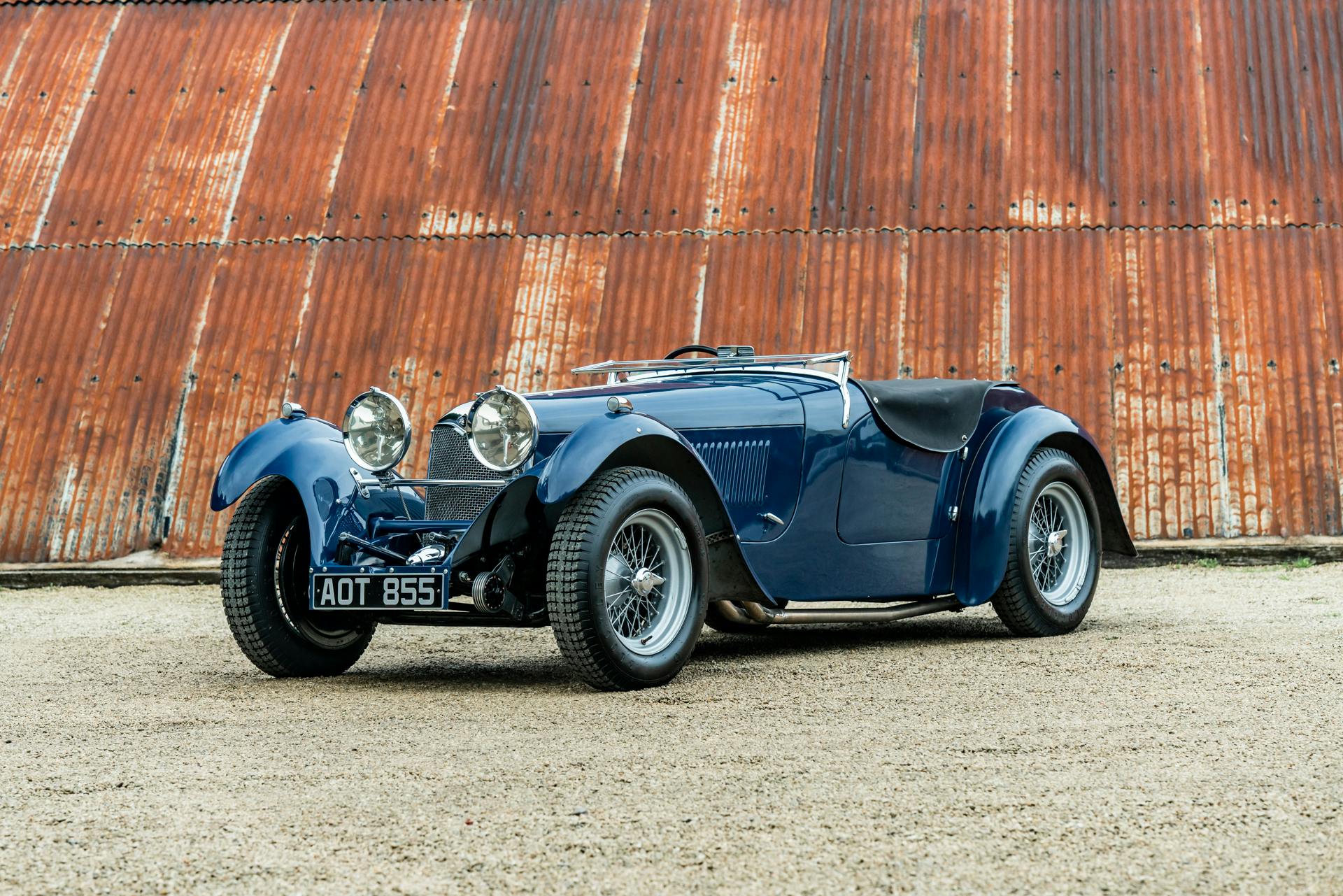1935 Riley MPH

Riley achieved immense competition success during the inter-war years and, with its rakish styling and six-cylinder engine, the MPH model was, in effect, a racing car for the road. Exclusive and expensive in period, it remains one of the Coventry marque’s most famous models.
This particular car is ‘MPH No 7’ – chassis number 44T 2255. It was first registered on 19 November 1935 by Stanley Hodgkinson of Botleigh Grange – a large manor house near Southampton. The Riley was therefore issued with the Southampton registration AOT 855.
That initial registration came almost a year after the main batch of MPH cars. Marque specialist Robin Cameron, writing in his reference work Riley MPH, suggests that ‘2255’ could originally have been supplied to Riley distributor Hector Dobbs, who was based in the outskirts of Southampton and regularly bought racing models and other special Rileys from the factory.
After remaining unregistered during its brief time with Dobbs, it’s thought he sold ‘2255’ to Hodgkinson and the original MPH body was replaced by a more-spacious body made by Bertelli – a coachbuilding company that was run by Enrico Bertelli and which supplied bodies to Aston Martin, which was based next-door to its premises in Feltham, Middlesex.
Although AOT 855 was advertised for sale in the mid-1960s as being ‘one of two’ with Bertelli coachwork, Cameron has written that the second car is, in fact, likely to have been one of the works Gamecocks used in the Alpine Trial. If correct, that makes AOT 855 the only MPH to feature a Bertelli body.
In the February 1939 issue of Speed magazine, the MPH appeared in the background of a photograph that was taken in the workshops of Thomson & Taylor – the Brooklands-based engineering firm that built Land Speed Record cars as well as the chassis for the famous ERA racing cars, which used Riley-derived engines.
AOT 855 was offered for sale during the late 1940s by dealer Blake & Co in Liverpool, by which time it was black. Riley Register records then show that, through the late 1950s and early 1960s, it was owned by N Ashurst, AA Heard and CM Ross.
In 1962, the MPH was sold via Chiltern Cars to a Mr Lowdell of Tring in Hertfordshire. His ownership was brief, and later in the year it was back with Chiltern Cars before passing to Tony Fitch of Falcon Hall, Wormley.
In 1964, Mr Fitch sold the Riley – which was then British Racing Green – to Donald Beatty of Walnut Creek, California. Early the following year, he wrote to the Classic Car Club of America requesting that the MPH be considered for membership and included a detailed description that included the engine number (14T 2255). After initially being refused, the request was granted in early 1966.
The Riley returned to the UK in 1974 via well-known London dealer Dan Margulies, who sold it to Fuad Majzub. Iranian-born Majzub was a wealthy businessman who had a large collection of cars, and in 1976 he entrusted the Riley to Automobile Restorations so that it could be rebuilt – a process that was never completed.
The car was kept in storage and shown, still incomplete, at the 1984 Riley Register Coventry Rally. When Fuad passed away, the MPH passed to his son Julian – a keen historic racer and founder of Blockley Tyres. It was then acquired by a new owner in 2004 and he treated the Riley to a full concours-standard restoration, after which he enthusiastically campaigned it in Vintage Sports-Car Club events.
Now being offered for sale by the Classic Motor Hub, this well-known Riley MPH comes with an extensive file that meticulously documents its history and includes correspondence and receipts going back to the 1960s. With its crisp six-cylinder engine and pre-selector gearbox, it is a stylish, fast and extremely usable 1930s sports car that’s eligible for a wide range of events and represents a rare opportunity to acquire a genuine MPH.
MODEL HISTORY
Like Aston Martin and MG, Riley was keenly aware of the promotional and engineering value of motor racing, and for 10 years following the introduction of its four-cylinder Nine model, it was a mainstay of the competition scene.
With its high-mounted twin camshafts, inclined overhead valves and hemispherical combustion chambers, the Nine engine was ripe for tuning. The Brooklands Speed Model not only won its class in events such as the Brooklands Double Twelve and the Index of Performance at Le Mans, it won the 1932 Tourist Trophy outright.
Adding two more cylinders to the Nine engine enabled Riley to develop a series of sporting ‘sixes’. They included the MPH, the prototypes for which were based on the works cars that had been campaigned in the 1933 Tourist Trophy. This latest model used a chassis that was underslung at the rear and featured a wheelbase of 8ft 1.5in, and three engines would be offered during its short life – 1458cc, 1633cc and 1726cc.
Two gearboxes were offered – a close-ratio manual or a pre-selector – and 18in Dunlop tyres were specified. Suspension was via semi-elliptic springs front and rear plus Duplex Hartford dampers. ‘To the open-air-loving motorist with sporting tendencies,’ wrote The Autocar in 1934, ‘this new Riley MPH should prove singularly attractive.’
In the 1934 Le Mans 24 Hours, two works-entered MPH models finished an amazing second and third overall, beaten only by the Alfa Romeo 8C-2300 of Luigi Chinetti and Philippe Étancelin. Despite that success for the six-cylinder car, the next generation of competition Riley was represented by the four-cylinder TT Sprite.
Riley produced only a short run of roadgoing MPHs alongside the racing variants. With its sporting bodywork and low-slung stance, it has – as noted writer Mick Walsh put it when he drove an MPH for Classic & Sports Car magazine – ‘the aura of a British Alfa Monza’. Little wonder it’s become such a coveted choice of 1930s sports car.